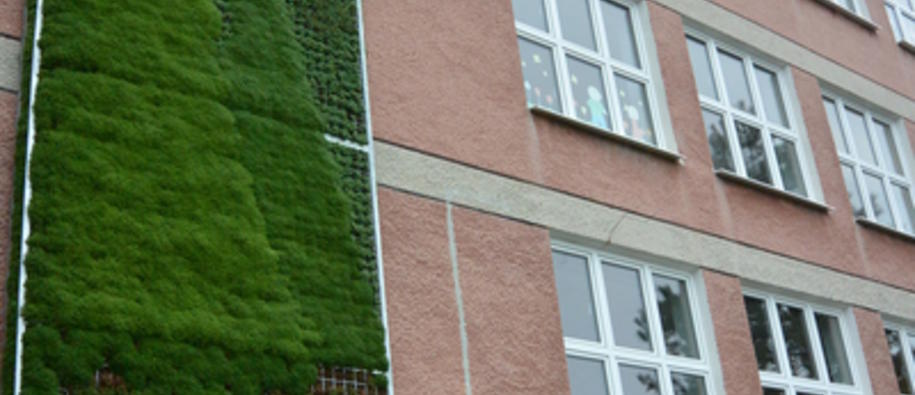Slovakia regularly faces overflowing rivers as well as long drought periods.
“Collection of rainwater can reduce the consequences of both flooding and drought. Holding back the water prevents it from flowing into rivers and cause flooding. At the same time, the water can be used to water plants in the area when it is dry,” said director Pavel Michal at Maximillian Hell school, one of 65 primary schools in Slovakia that have received funding from Iceland, Liechtenstein and Norway to implement rainwater collection and recycling systems, green roofs and rain gardens. The facilities installed at the schools also serve as pilot projects for larger projects in this field.
Increasing awareness
The school projects – called “Blue School” projects - taking place across Slovakia use the new rainwater collection systems as a starting point for teaching the children about climate change and how society can adapt to it. When the youngest generation increases its awareness at school, the information is also spread through the families into the general public.
Maximillian Hell School is located at the bottom of the volcanic mountain range Štiavnica in the southern part of central Slovakia. Through the project, they have constructed two ponds for harvesting rainwater and a “green wall”. The pond can hold 25 000 litres of rainwater collected from the school roof. In addition water is directly transported to a vegetable garden. The rainwater is also used to water the 12 meter tall “green wall” with 3500 native plants. During drought periods, this kind of wall can prevent spreading of dust and even cool down the classrooms.
Creative climate change education
The project is funded by the EEA Grants “Adaptation to climate change” programme in Slovakia. Representatives from the two Norwegian donor programme partners, the Norwegian Water Resources and Energy Directorate (NVE) and the Norwegian Directorate for Civil Protection (DSB) visited Maximillian Hell and other schools funded by the programme earlier this year.
At Life Academy School in Poprad in the north of Slovakia, they have also made collection points for rainwater and systems to absorb the water and lead it down to the groundwater to prevent surface flooding. The pupils are involved in the project and learn about climate change adaptation in their biology classes.
“I have become more aware and see the big picture now,” said Michal Strelecki (19).
Karl Kerner from DSB is impressed by what the schools had achieved through the projects.
“I see more creativity in climate change education at some of these schools than at home in Norway,” he said.
The article is produced based on material from the Norwegian Directorate for Civil Protection (DSB).
More information
Find out more about the adaptation to climate change programme in Slovakia
Read about The Norwegian Directorate for Civil Protection's role as a donor programme partner
Read about The Norwegian Water Resources and Energy Directorate's role as a donor programme partner

